Practicing Frank Butoh facilitation
My workshops are:
A social place
A kind space – to each other and one’s self
A place to try something new
Creative encounters – non-hierarchical, everyone coming with their own expertise
Tuning into our bodies
Moving based on visualisation
Improvisational
Educational
Self-care
Free/Pay what you like
Most recent workshop:
“What has become of our bodies?”
Butoh is:
Slow movement
Meditative
Creative
Focused
Grounding
Doesn’t have a particular outcome
Gentle exercise
Buddhist reflections used in my workshops:
My training:
I’ve been practicing Butoh for three years and facilitating workshops for the last two, just wanting to explore this beautiful and deeply meaningful practice with others. After an extended time in meditation at a Buddhist forest monastery in 2015-2016 I returned to London, and came across images of this practice. Butoh struck a deep chord with me as it was a creative and cathartic way to explore many similar contemplations as my monasticism.
I have trained under prolific Butoh dancer and academic Marie Gabrielle-Rotie and owe so much to her artistry in my approach to the discipline now. In her own words Rotie’s Butoh approach “aims to balance spirit and form, choreography and improvisation, the lineages of Hijikata and Ohno…Her teaching focuses on the craft of 'making' in the moment and draws upon her interest in distillation, playing with time, transformation, and states of 'becoming'.”
Rotie worked to establish Butoh UK; a network of Butoh dancers in the UK and a body which invites masters from Japan and internationally to teach and enrich the then very small and now thriving UK Butoh community. Greatfully I have trained with multiple other Butoh practitioners and regularly jam through this community, as well as beyond it.
I have continued to be struck by Butoh owing to the incredible community of artists who continually explore its questions and develop new ways of being with its philosophies. I look forward to future collaborations, Butoh jams, smiles and developments.
A research project I undertook in 2019 taking a deep-dive into facilitation practice. The project radically developed my facilitation skills, and resulted in many workshops I facilitated for the carers support center in my community in Tower Hamlets, London. As a former carer myself and now Butoh dancer, I conducted practical research into what Butoh could offer carers. This presentation is the summation of my research, the ongoing series of workshops with Carers Centre Tower Hamlets took place after this presentation.
Developing the Dance of Becoming with Carers
About Butoh
Butoh arose Post-Hiroshima and Post-American Occupation of Japan in the late 1950’s and arose from the social and political climate reflected in artistic practices both in Japan and in Europe. Butoh founders drew from many sources including German Expressionism, Antonin Artaud, Surrealism, Japanese traditional theatre and literature etc.
The main founders are Tatsumi Hijikata and Kazuo Ohno. What began as a deliberate rejection of conventional western dance technique and the constraints of traditional Japanese Theatre developed into a strong underground, avante –garde movement revolving around the charismatic centre of Hijikata.
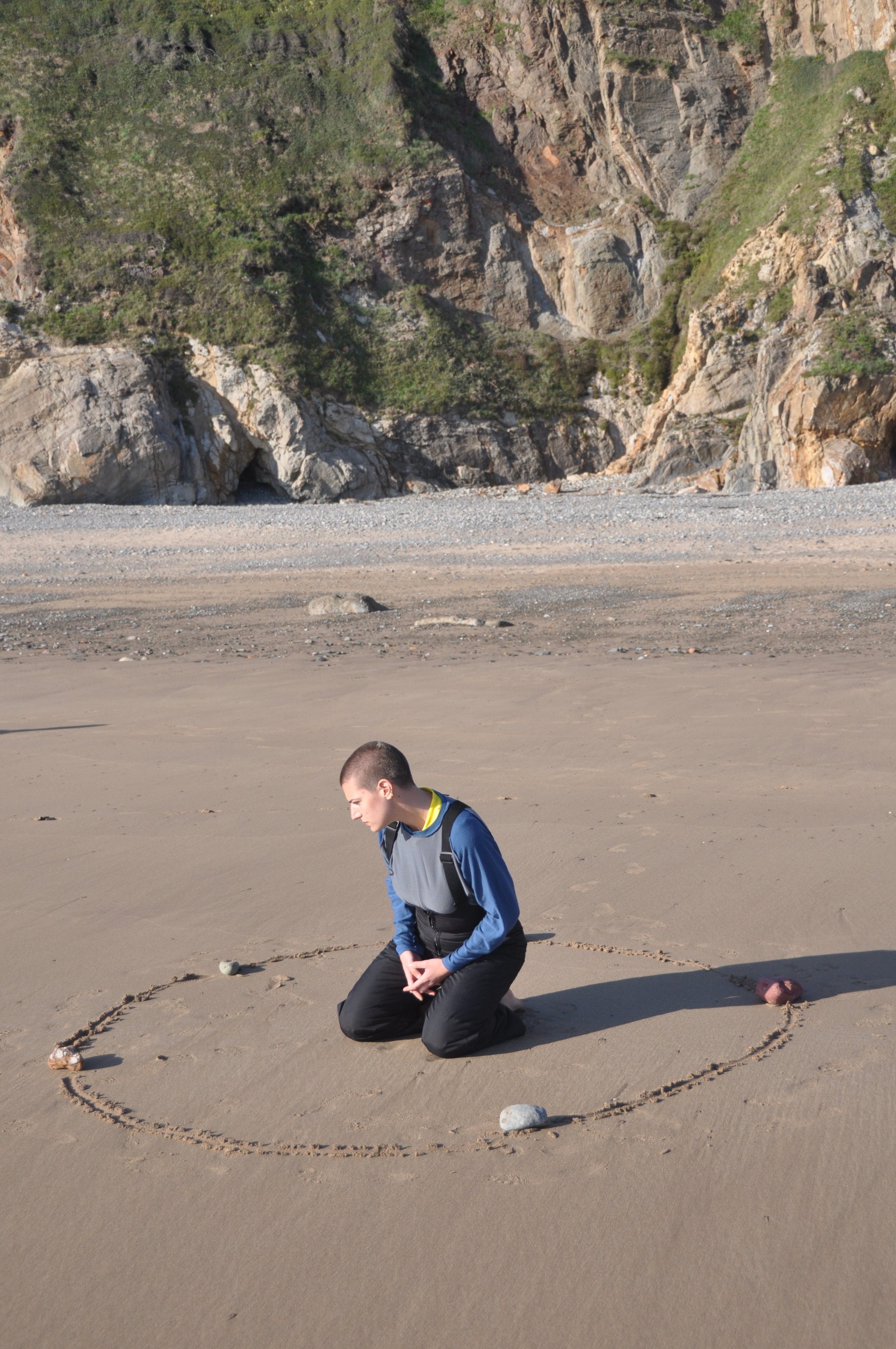
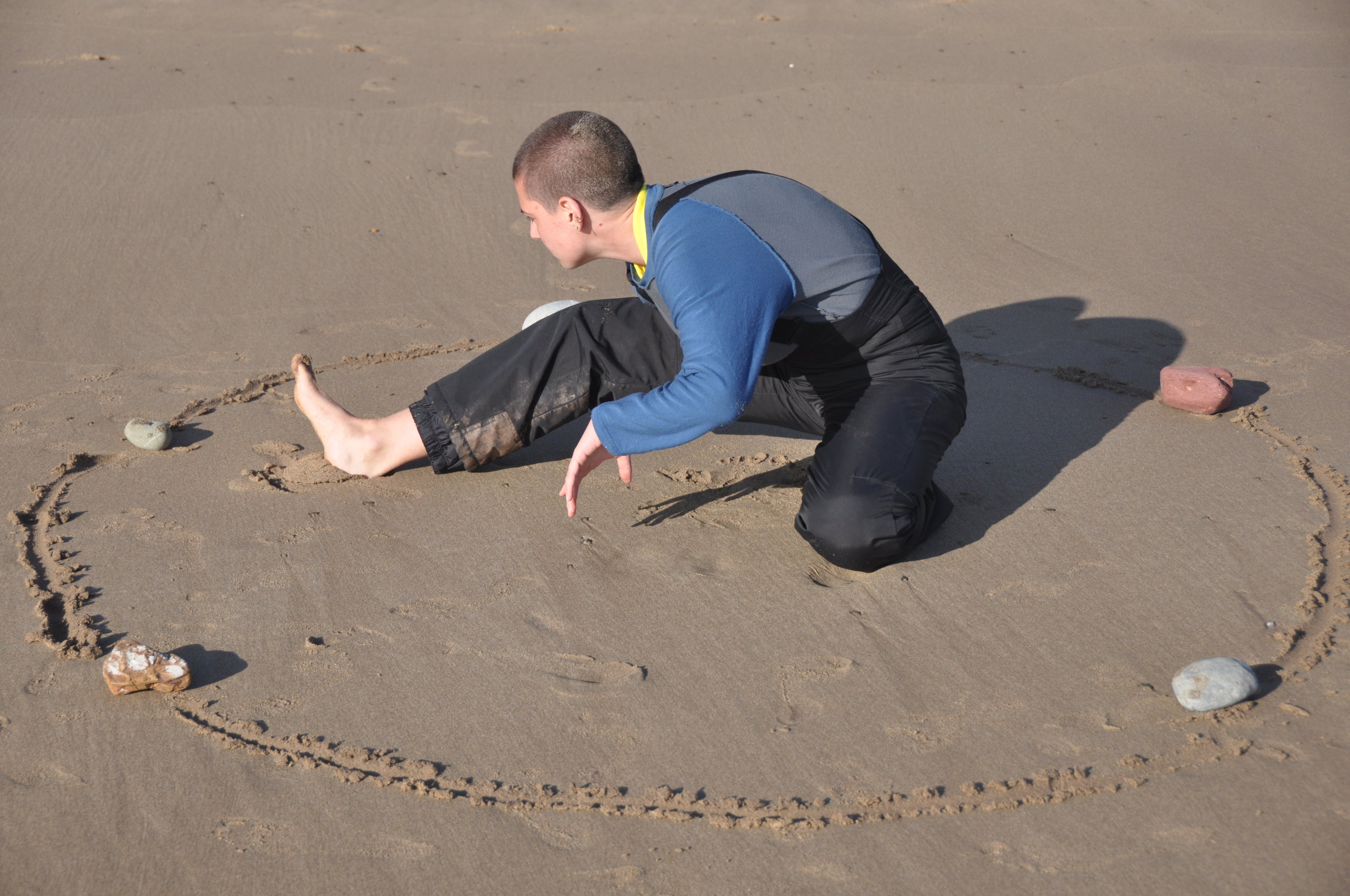
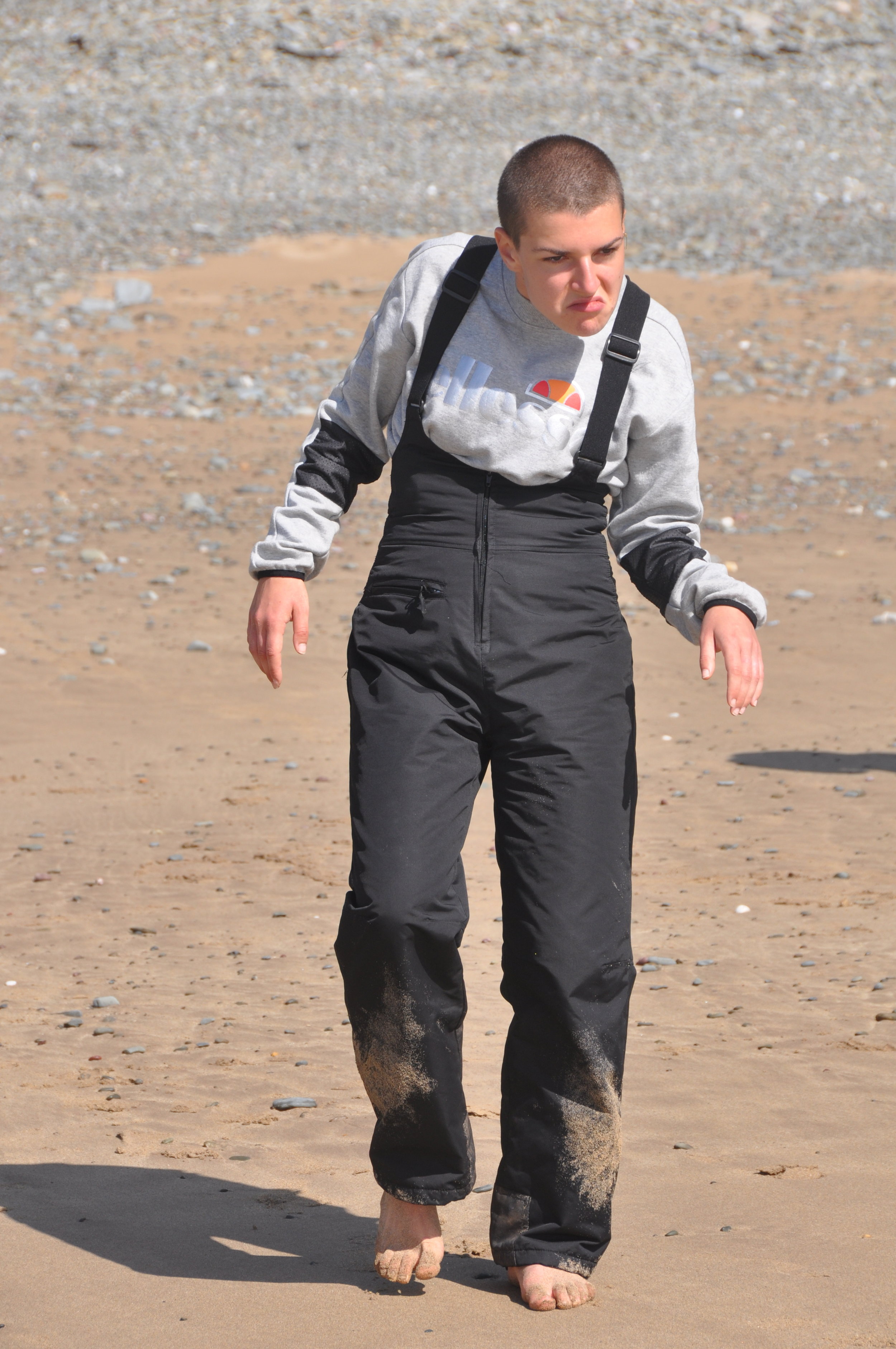
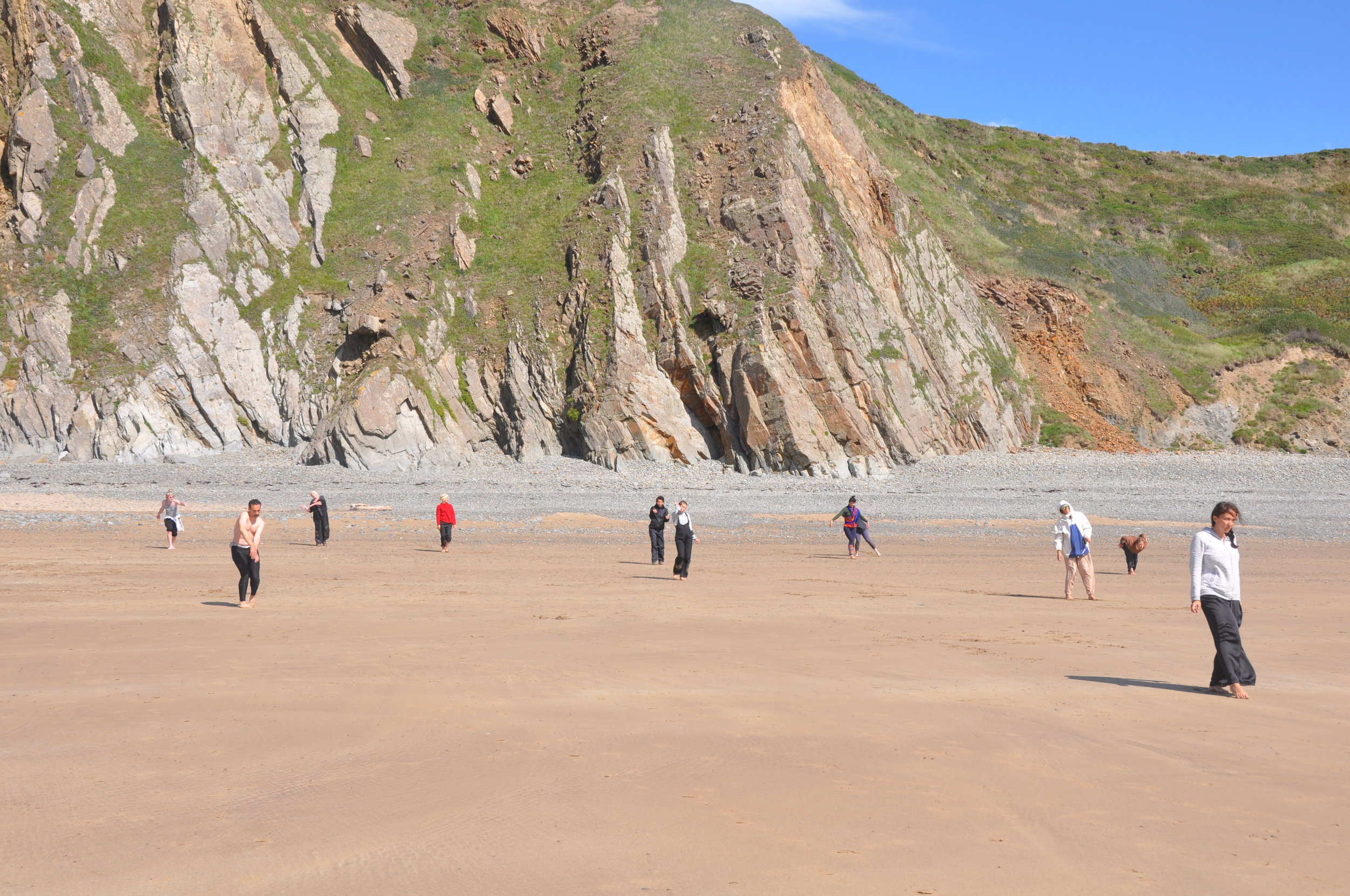


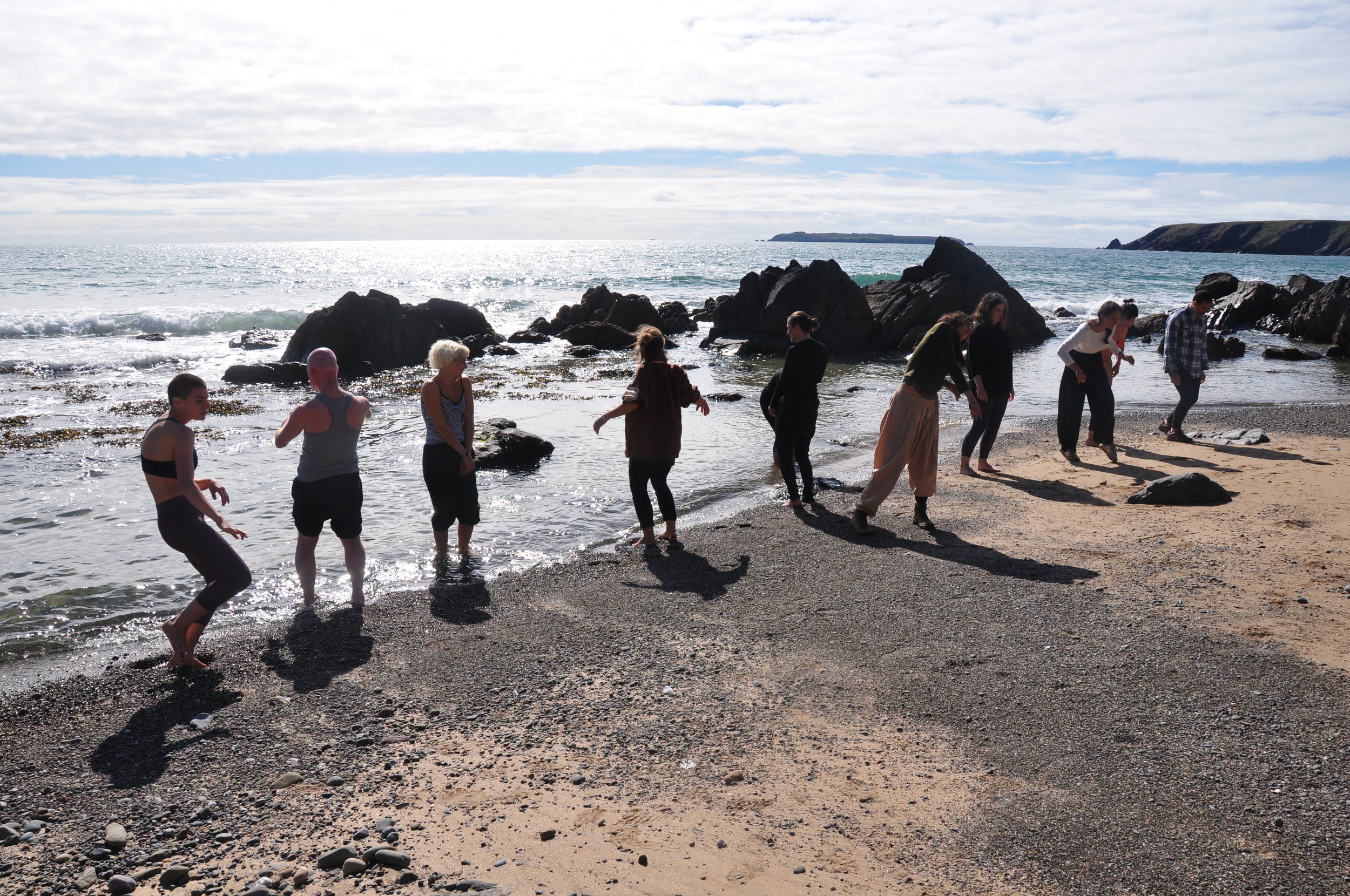
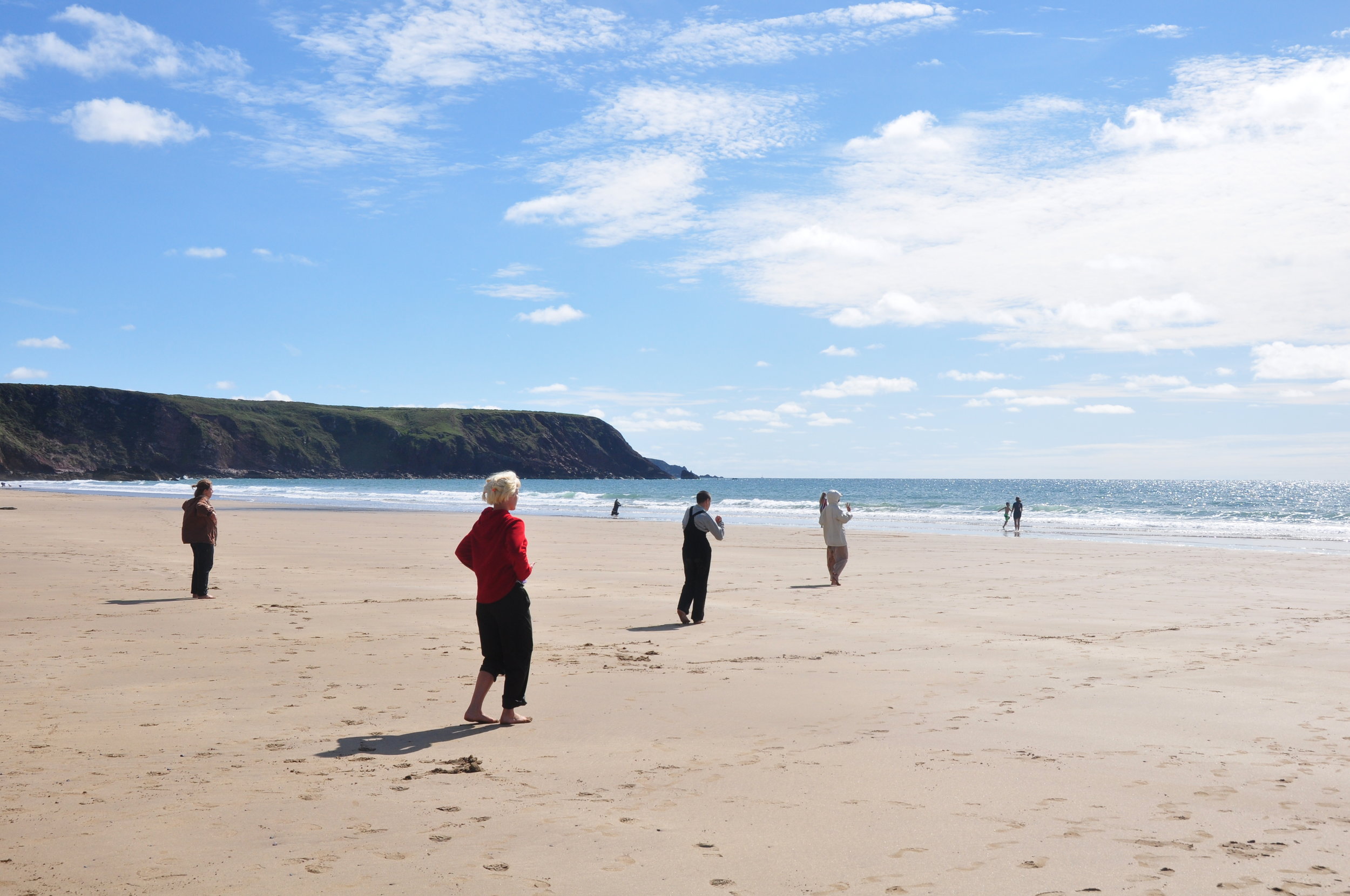
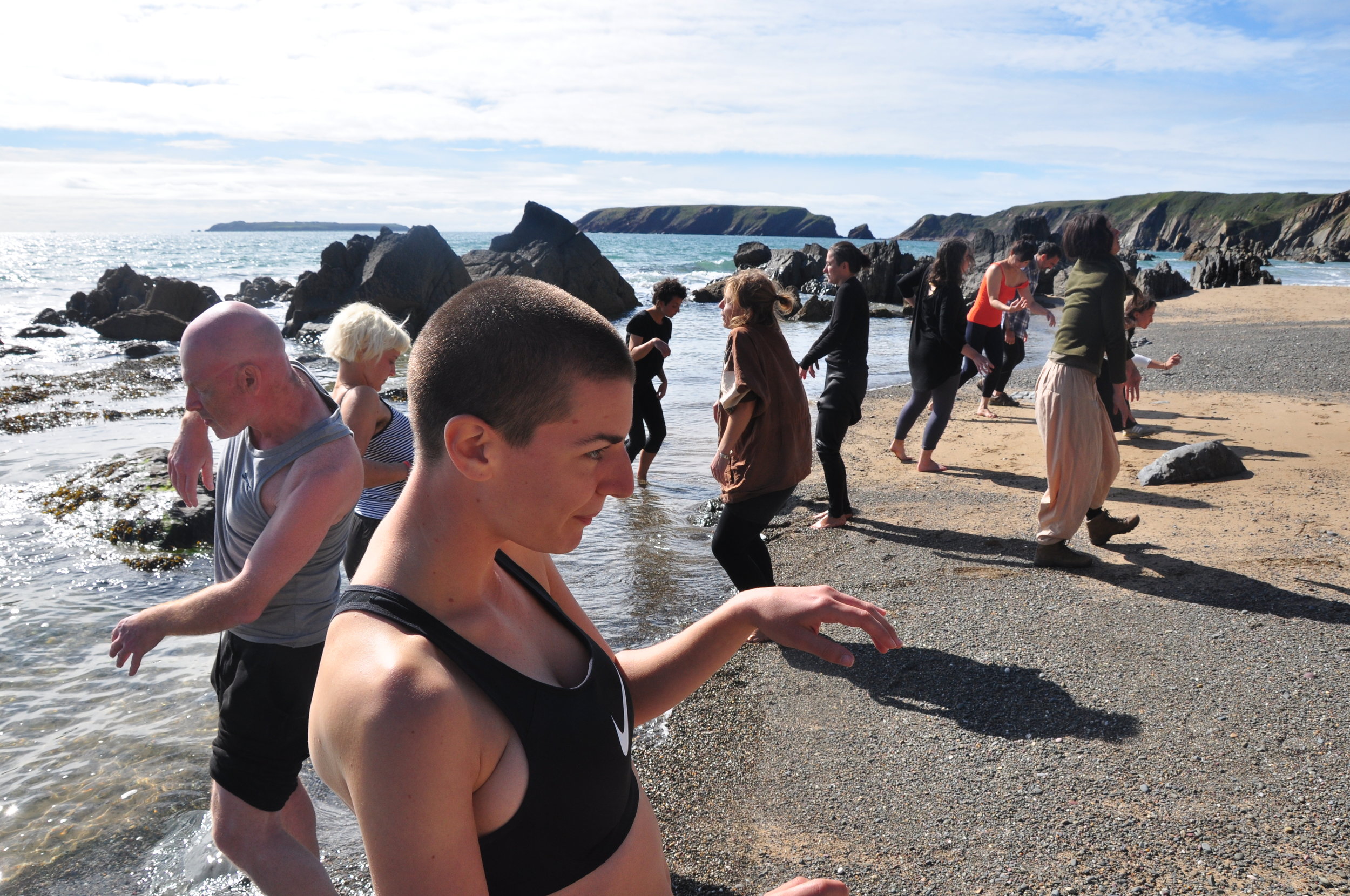
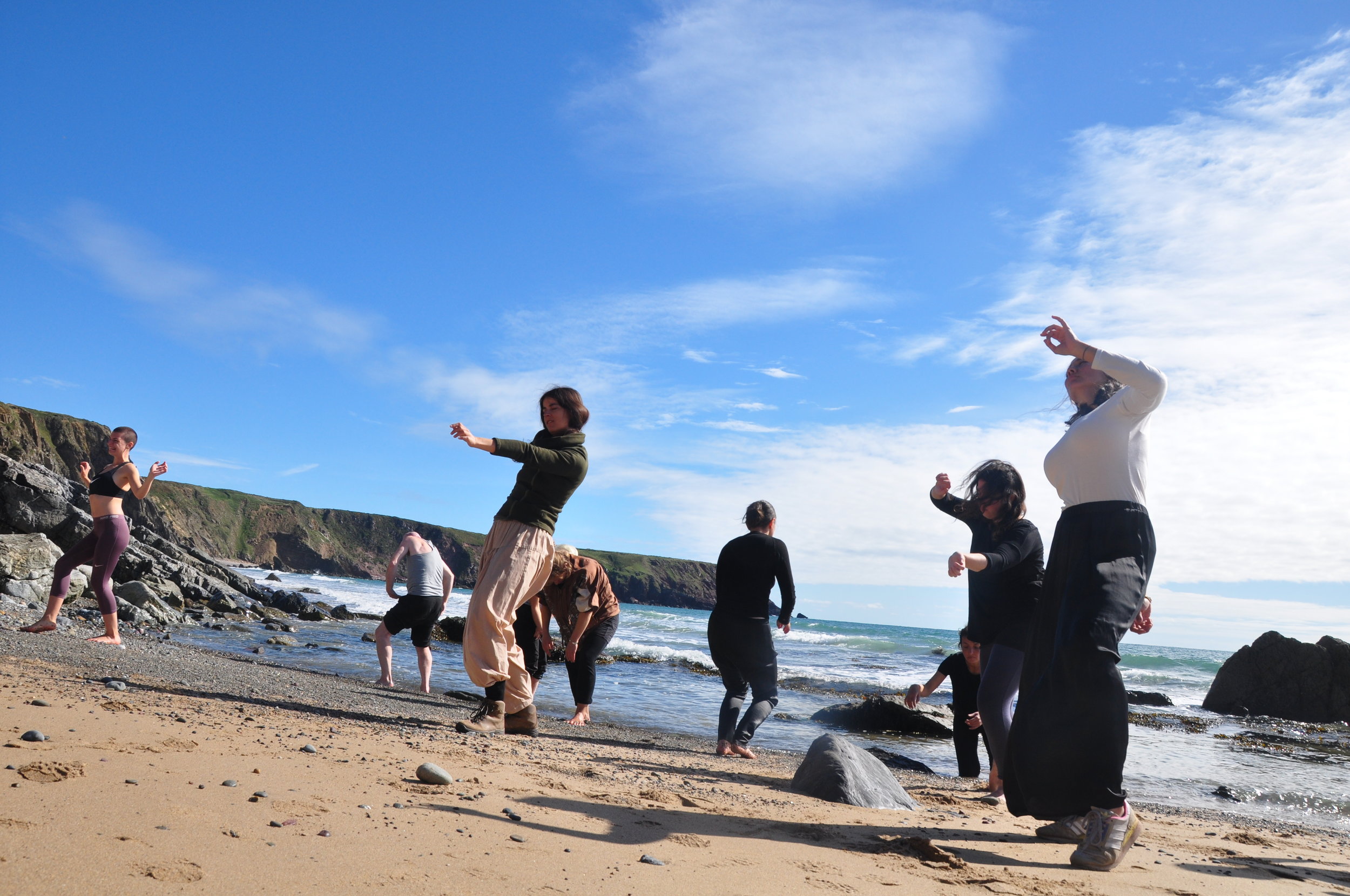
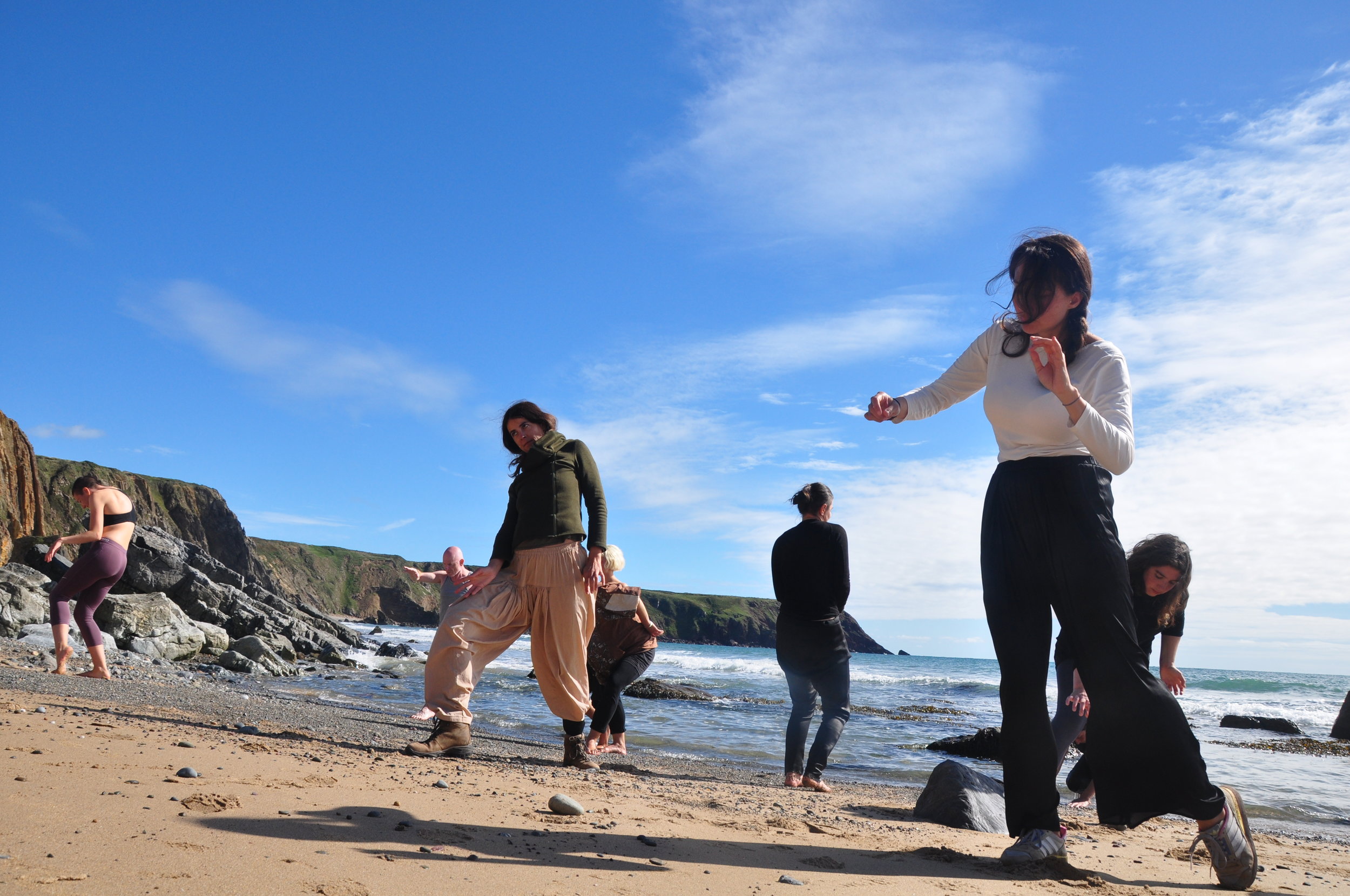
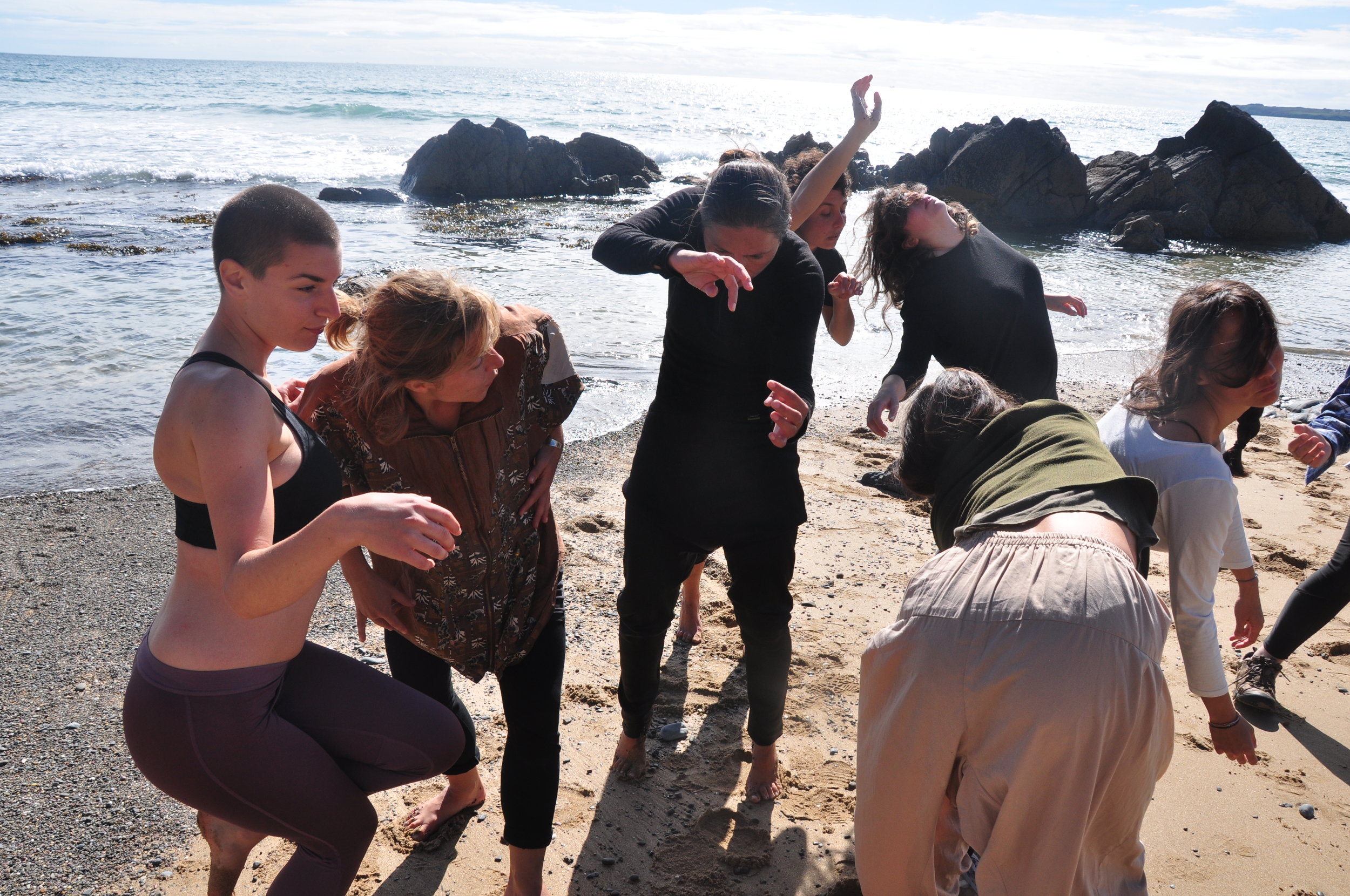
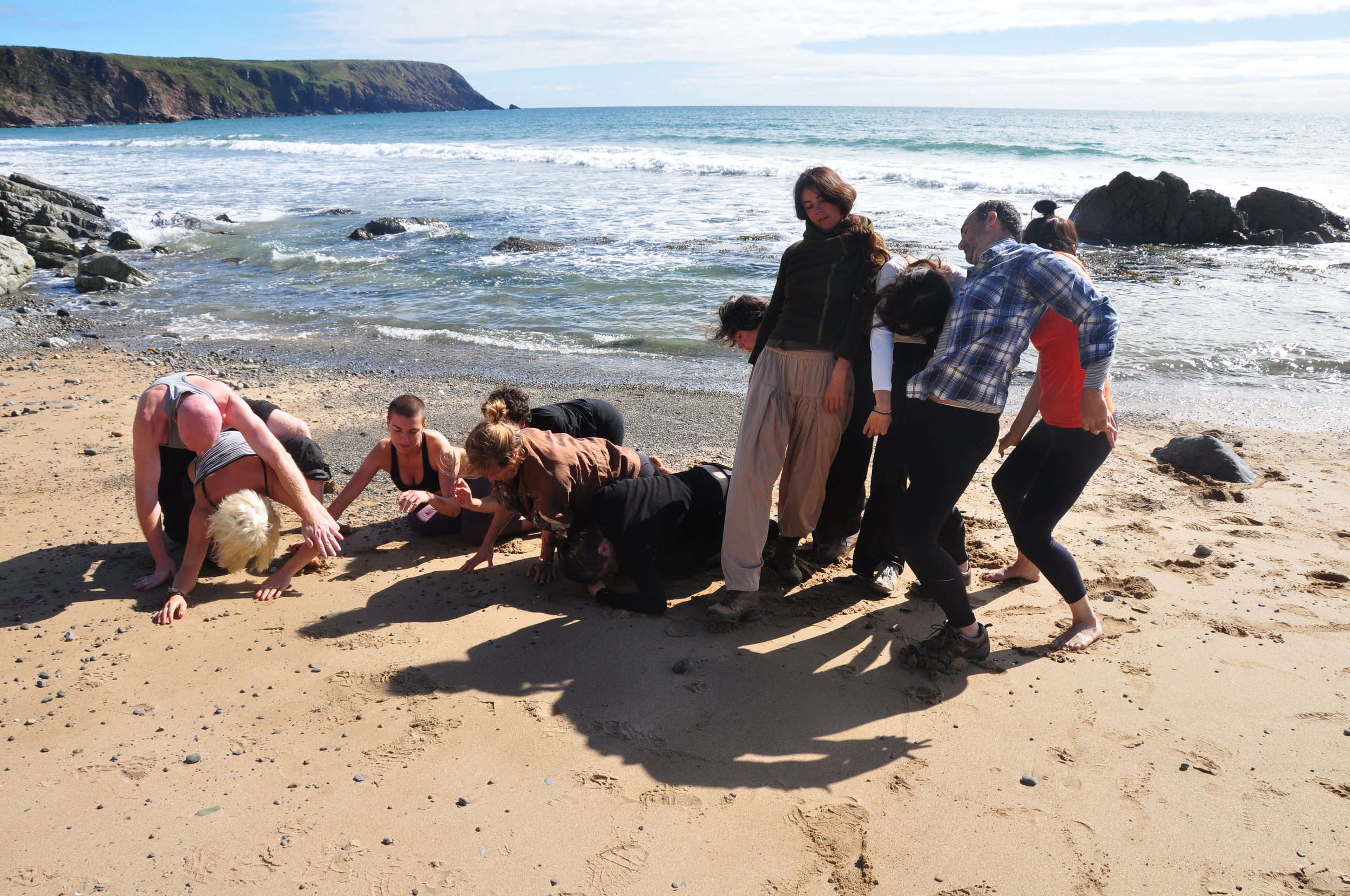
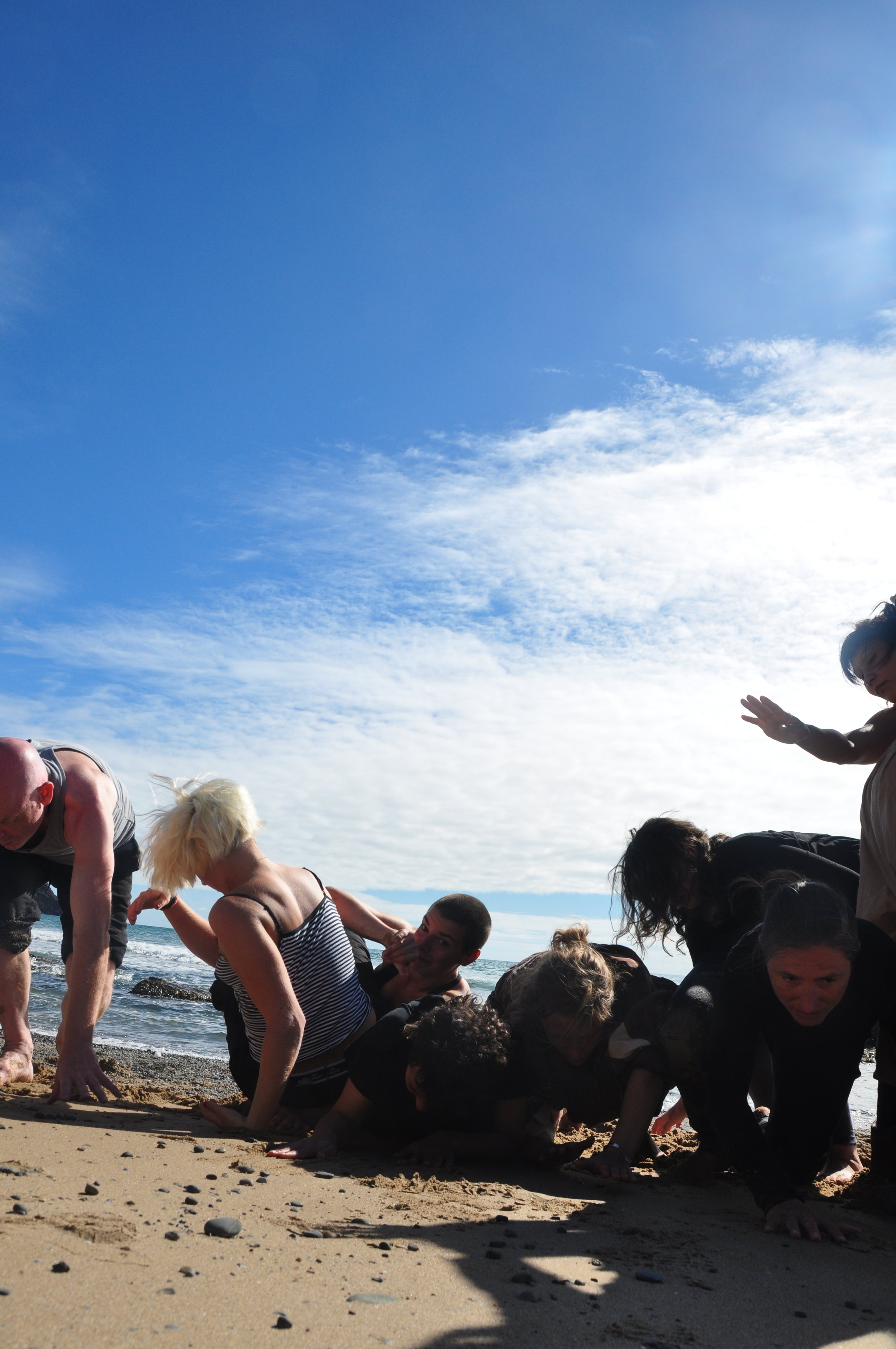
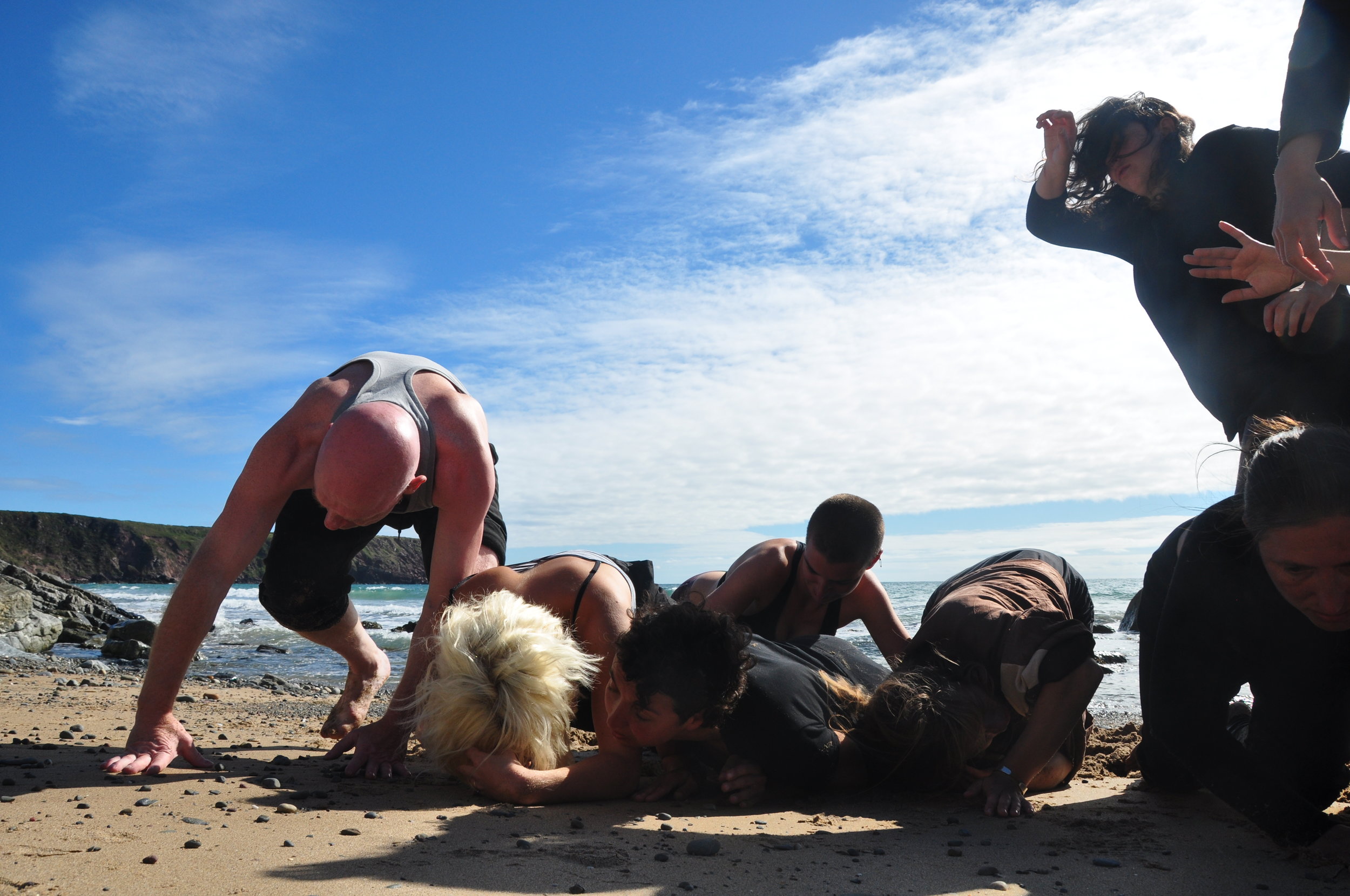
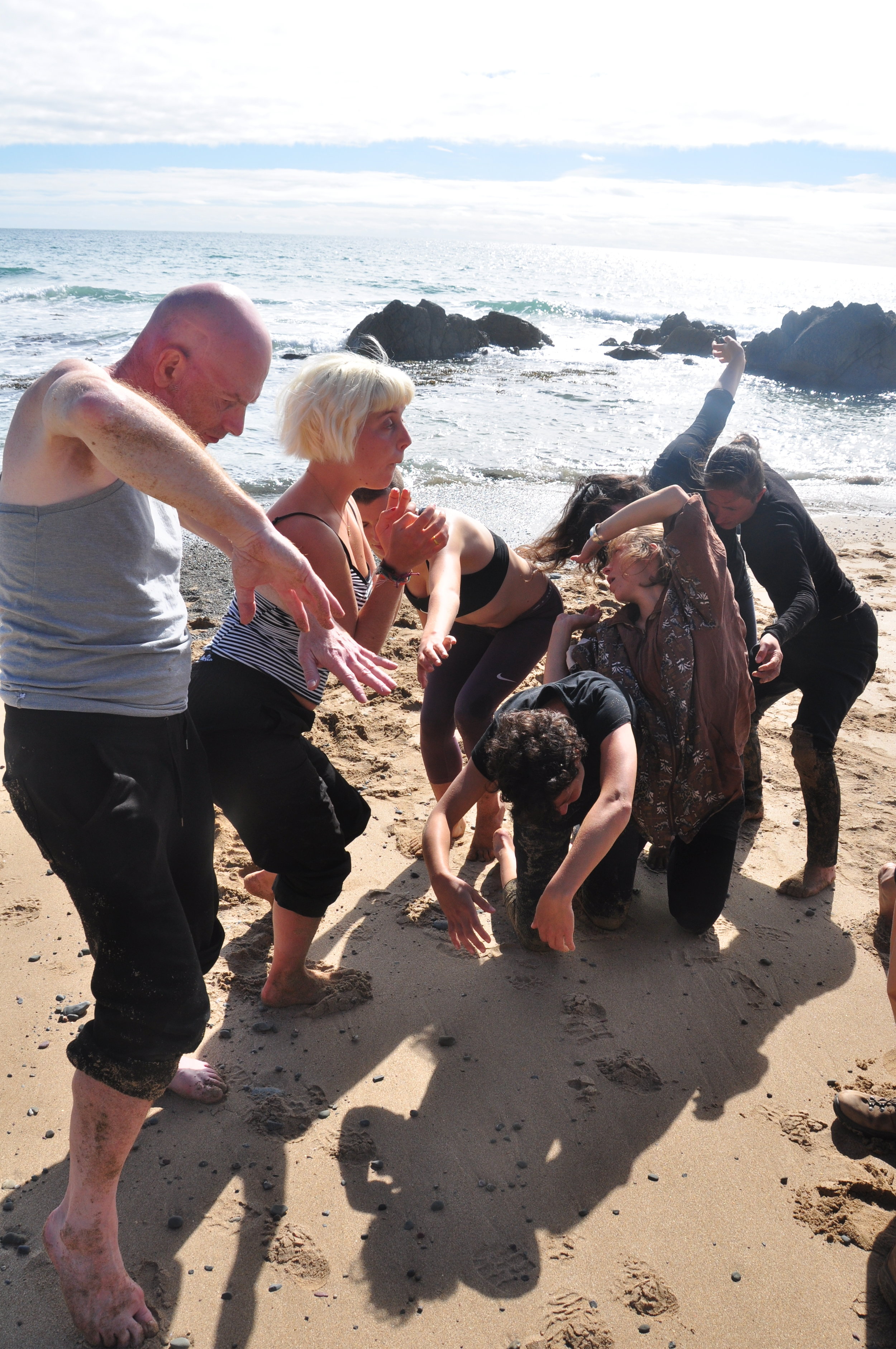
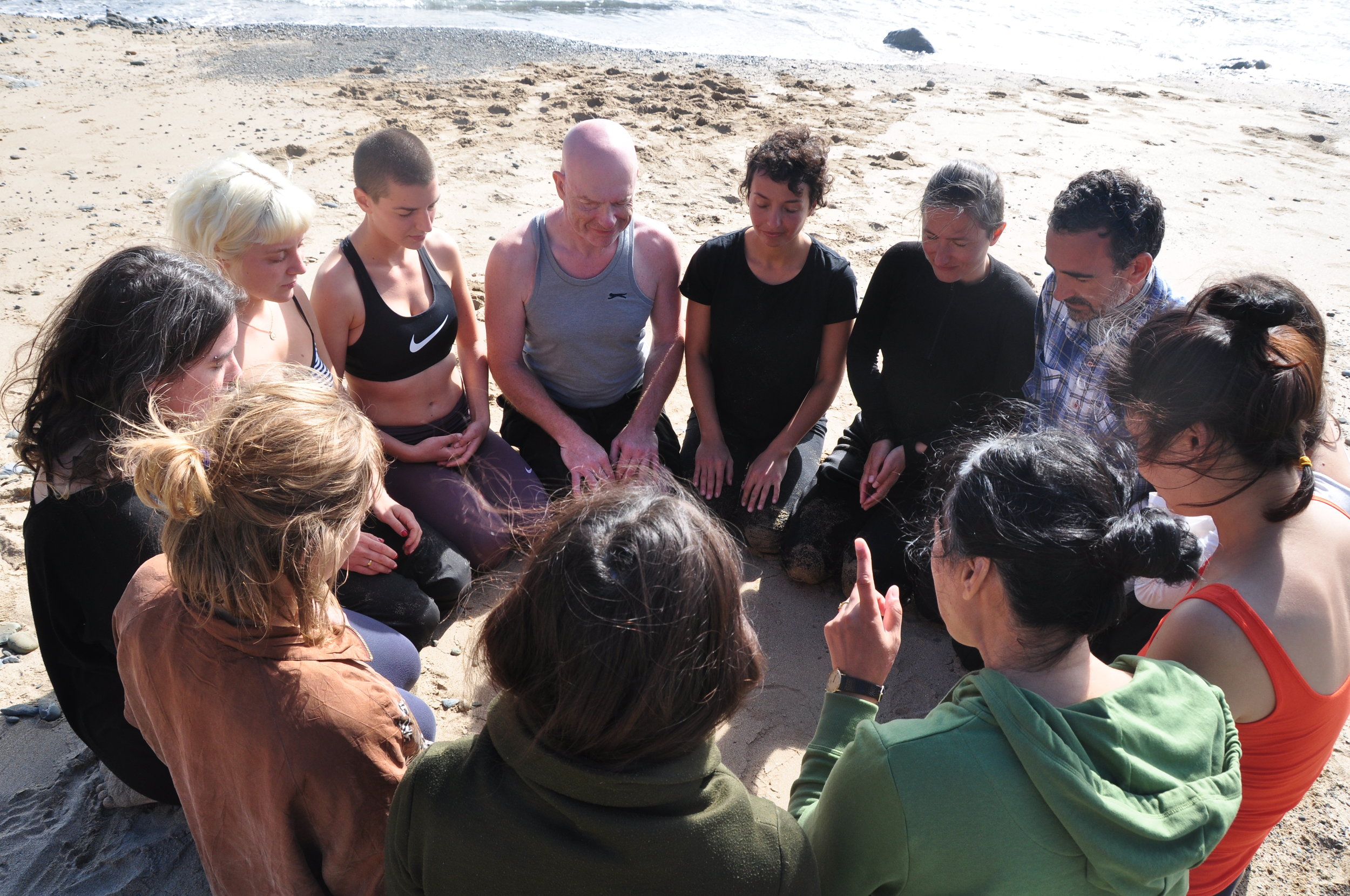
Images from a Butoh and the Environment workshop Rotie and collaborator Nick Parkin ran in 2018. Photo credits Marie Gabrielle-Rotie © 2018
Several generations of Japanese Butoh dancers have now emerged and starting with the experiments of Min Tanaka with Mai Juku, western dancers entered the experimental field of Butoh in the late 1970’s. Butoh gained more international momentum with its emergence in Europe through the appearances of such artists as Natsu Nakajima, Kazuo Ohno, Ko Murobushi, Carlotta Ikeda/Ariadone, and of course Sankai Juku. The result, since the 1980’s, has been a sustained international growth and development of Butoh into extremely diverse forms of expression.
Common forms of enquiry within Butoh revolve around asking the question ‘ what is dance?’ allied with attempts to erase the ‘self’ and shed the ‘daily body’ to return to a ‘body that has not been robbed’.
Common images and themes explored through mainly improvisation processes, embrace cycles of life, birth, death, nature imagery, physical transformation, playing with time and slow motion, sensitising the material body and working from the inside to the outside, from inner impulse to outer ‘form’ to discover the immaterial.
Butoh encourages each individual to find their own way of moving and we as workshop leaders are not interested in imposing a ‘style’ but in facilitating a process of discovery and creativity.
-Marie Gabrielle-Rotie © 2018
Further information/resources:
‘Today, Butoh encompasses a range of styles, from the grotesque to the austere, and from the erotic to the comic. It is frequently regarded as surreal and androgynous, and focuses on primal expressions of the human condition rather than physical beauty.’
‘I think it’s about achieving transformation. People said that when Ohno danced he radiated joy. But I feel he touched people because he was able to access the memory of suffering’
‘without having to travel anywhere, physically; but to be able to close my eyes, and deeply breathe within the boundaries of a modest-size room, wherein I can 'travel' into a new body and space of mind; it was wonderful.’
‘I am surprised by how the traces of the class keep lingering in my bodymind, leaving me feeling both very grounded and very opened.’
-From https://www.vangeline.com/testimonials
Long reading
Butoh artist Vangeline has a great written history of Butoh on her website: https://www.vangeline.com/butoh/
Himalayan subbody, a research centre of Butoh has these collaborative generated guides:
‘Practice Guide For Butoh Revolution’ by Rhizome Lee http://www.subbody.net/14pdf/Practice-Guide-Digest.pdf
‘The Butoh Revolution A dedication to Tatsumi Hijikata’ Third Edition by Rhizome Leehttp://www.subbody.net/14pdf/Butoh-Revolution-Third-Edition-200204.pdf
‘Qualia As Life Resonance’ by Rhizome Lee http://www.subbody.net/14pdf/Qualia-As-Life-Resonance-Second-edition.pdf



